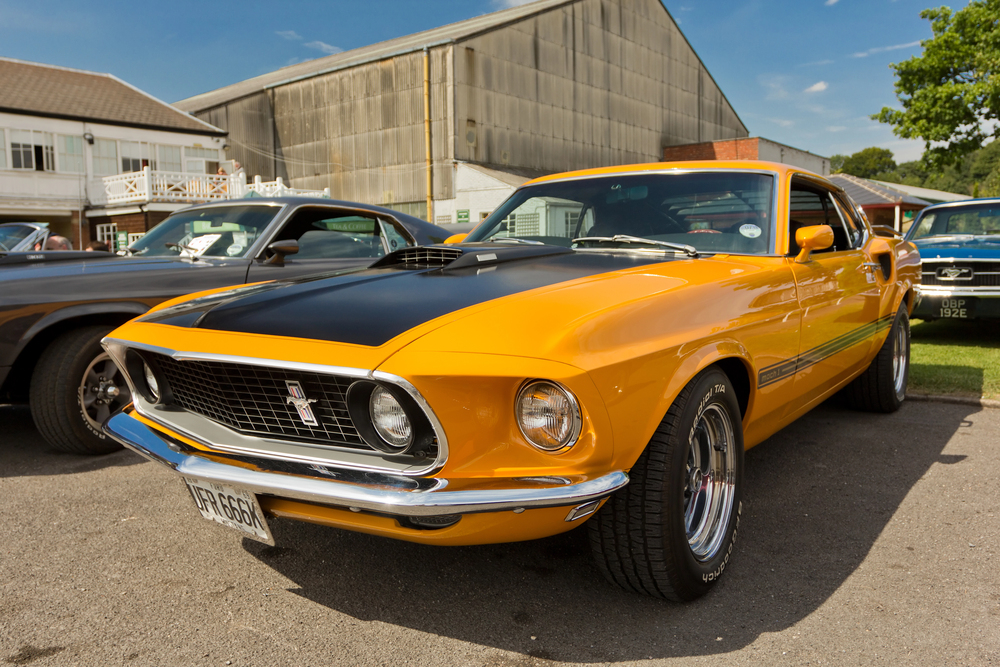Car brand logos are more than just symbols; they tell stories of heritage, innovation, and identity. Many of the most recognizable logos have hidden meanings, subtle design choices, or deep historical significance that reflect the brand’s journey. Over time, these logos have evolved, adapting to modern aesthetics while retaining their core essence. Here’s a deep dive into the secret history, hidden meanings, and fascinating evolution of iconic car brand logos.
Ferrari – The Prancing Horse’s Military Origins

Ferrari’s iconic prancing horse traces back to an Italian WWI fighter pilot, Francesco Baracca, who painted a similar horse on his plane. Enzo Ferrari adopted it as a tribute, adding the yellow background to honor his hometown of Modena. The horse symbolizes power, speed, and prestige, making it a perfect fit for the brand’s high-performance legacy.
Mercedes-Benz – The Three-Pointed Star’s Vision

Mercedes-Benz’s three-pointed star represents its ambition to dominate land, sea, and air transportation. The logo was inspired by a star that founder Gottlieb Daimler once used to mark his home on a postcard. Over time, it became a global symbol of innovation, luxury, and engineering excellence.
BMW – The Propeller Myth and Bavarian Colors

Many believe BMW’s logo represents a spinning airplane propeller, referencing the company’s aviation roots. However, it actually features the blue and white colors of the Bavarian flag, symbolizing the brand’s German heritage. The sleek circular design has remained largely unchanged, reinforcing its premium and performance-focused image.
Audi – The Four Rings of Unity

Audi’s four interlocking rings symbolize the 1932 merger of four German automakers: Audi, DKW, Horch, and Wanderer. Each ring represents one of these companies, signifying their combined strength and engineering expertise. Today, the rings embody Audi’s commitment to innovation, performance, and luxury.
Porsche – A Blend of Two Coat of Arms

Porsche’s logo merges elements from the coat of arms of Württemberg and Stuttgart, where the company is based. The prancing horse represents Stuttgart’s heritage, while the antlers and red-and-black stripes come from Württemberg’s crest. This fusion reflects Porsche’s deep German roots and commitment to high-performance engineering.
Lamborghini – The Bull’s Bold Power

Lamborghini’s raging bull logo stems from founder Ferruccio Lamborghini’s admiration for Spanish bullfighting. The emblem also reflects his zodiac sign, Taurus, reinforcing the brand’s aggressive and powerful nature. The gold-on-black color scheme enhances its luxurious and commanding presence.
Rolls-Royce – The Spirit of Ecstasy’s Elegance

The Spirit of Ecstasy, Rolls-Royce’s signature hood ornament, was inspired by a secret love affair. Designed by sculptor Charles Sykes, it was based on Eleanor Thornton, a model and the lover of a Rolls-Royce executive. This graceful figure symbolizes luxury, exclusivity, and effortless motion.
Toyota – The Three Ellipses’ Hidden Message

Toyota’s logo features three overlapping ellipses, representing the brand, its customers, and their mutual trust. The inner shapes also subtly spell out “Toyota” while symbolizing global expansion and unity. The logo’s simplicity reflects Toyota’s commitment to reliability and innovation.
Volkswagen – The People’s Car Initials

Volkswagen’s logo is a straightforward combination of a “V” stacked on a “W,” standing for “Volkswagen,” which means “People’s Car” in German. Originally created under government influence, it has evolved into a symbol of quality and accessibility. The clean, modern design reinforces the brand’s reputation for engineering excellence.
Chevrolet – The Bowtie’s Mystery Origins

The Chevrolet bowtie’s origins are debated, some say it was inspired by a wallpaper pattern, while others claim it came from a newspaper ad. Regardless of its source, the emblem has become one of the most recognizable automotive symbols. Its bold design represents durability, dependability, and American automotive heritage
Ford – The Blue Oval’s Enduring Legacy

The Ford logo’s blue oval and script lettering have remained largely unchanged for over a century. The elegant typography was inspired by Henry Ford’s early signature, reflecting the brand’s personal touch. The blue color signifies trust, reliability, and strong American roots.
Honda – The ‘H’ of Precision and Innovation

Honda’s simple yet distinctive “H” logo stands for the founder, Soichiro Honda, and the brand’s engineering precision. Its slightly upward-slanting arms symbolize growth, ambition, and forward-thinking design. The minimalistic approach reflects Honda’s focus on functionality and efficiency.
Car logos are more than just branding; they carry hidden meanings, historical significance, and evolving design philosophies. Whether rooted in family heritage, national pride, or engineering ambition, these emblems tell compelling stories. As the automotive industry continues to innovate, car logos will remain powerful symbols of identity, tradition, and progress.
Disclaimer: This list is solely the author’s opinion based on research and publicly available information.


